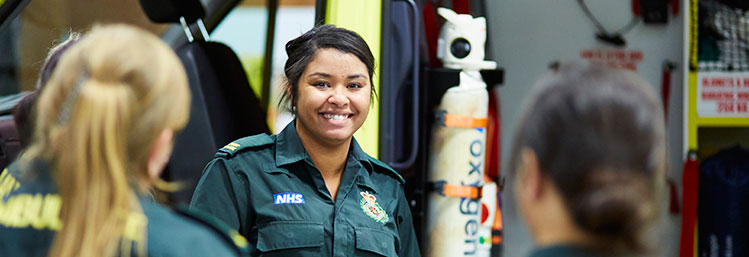
Paramedic Science
BSc (Hons)
- Typical offer for 2025
- Duration
- UCAS code
- Start date
- Location
Suitable for applications.
My experience on the course has been extremely positive. I think we’ve got a really good team of academic staff who are very passionate about what they do. We’ve got massive support through Yorkshire Ambulance Service who partner the course, so there’s a lot of real hands-on training that’s as relevant to us as students as it is to the professionals out in the field at the moment, so you really feel like you’re getting the best possible training.
Placement Year
Teaching, learning and assessment
During the first two years of the programme you will develop the essential clinical skills which are aligned to the role of 'Emergency Medical Technician II', including advanced driving techniques.
At the end of year two of the programme you will apply to undertake a paid sandwich year, during which time you are employed by YAS in a frontline clinical role.
This will be a full time temporary contract.
This year is credit bearing and is a required element of the programme assessed on a pass/fail basis, however it does not contribute towards your degree classification.
In the final year of the programme you will return to university and ambulance service teaching facilities based teaching, and will deepen your knowledge and skills to become competent to undertake autonomous paramedic practice at the point of registration.
Again you will undertake clinical practice placements under the direct supervision of mentors. During this final stage you will also undertake modules drawn from the Faculty's existing CPD catalogue, allowing specialisation in clinical practice.
Mode of delivery — Team-based learning, high fidelity clinical skills simulation, integrated practice placements and a sandwich year professional placement.
Learning outcomes — Mapped against the Health and Care Professions Council (HCPC) standards of proficiency for paramedics (HCPC 2014) as well as the College of Paramedics curriculum guidance (CoP 2015) and the QAA benchmark statement for paramedic science (QAA 2016).

Study abroad
A study abroad year is a fantastic opportunity to broaden your horizons, build connections with people from different backgrounds and cultures, and strengthen your skills and experience to make you stand out in the job market.
We have opportunities for students to study, work or volunteer in more than 150 countries across the world and will support you every step of the way.
Study support
Research
Terms and conditions of study
The University has a set of terms and conditions for all students accepting an offer to study on a course here at Bradford. This is called The Student Contract. This document sets out the Terms and Conditions which apply when you accept an offer of a place on a programme of study at the University of Bradford.
View our Student Contract for further details.
Transparency statement
Information about this programme and its modules has been published in advance of the academic year to which it applies. Every effort has been made to ensure that the information is accurate at the time of publication, but changes may occur given the interval between publishing and commencement of teaching. Any change which impacts the terms and conditions of an applicant’s offer will be communicated to them.

